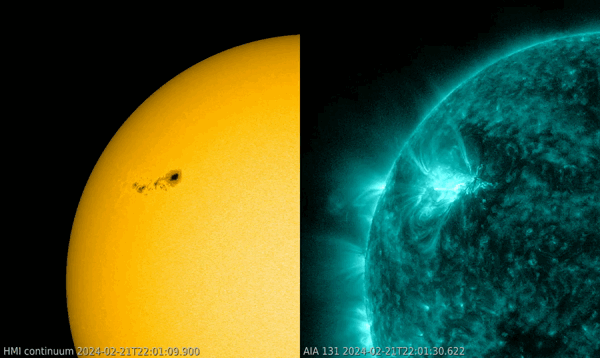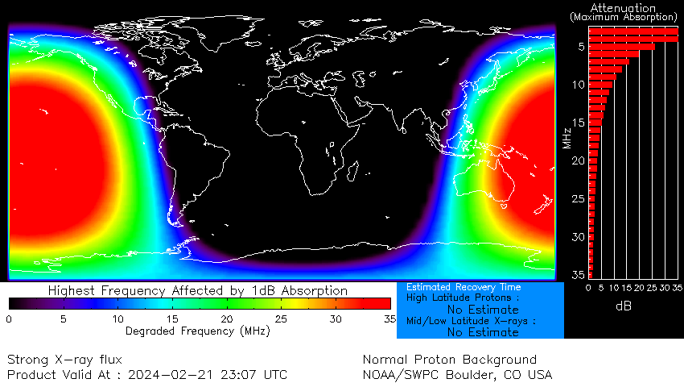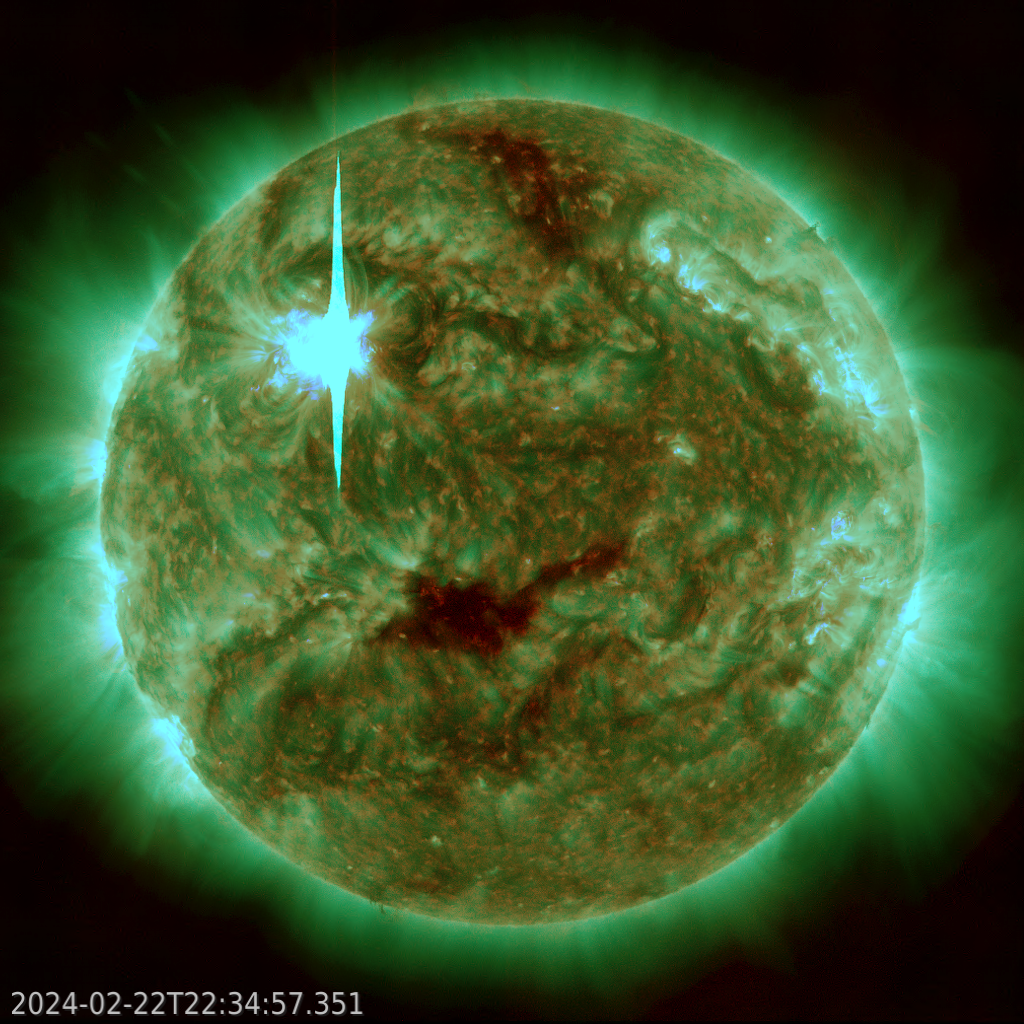UPDATES are added at the end of this article. Please scroll down.
Large and complex active region NOAA 3590 produced an X1.8 flare peaking on 21 February at 23:07UTC (GOES). SDO images underneath show the sunspot group in white light (left) and in extreme ultraviolet (AIA 131) near the time of the flare's peak. As of the writing of this article, the region produced another X-class flare, this time X1.7 flare peaking on 22 February at 06:32 UTC. Further details on the latter flare can be found on the SIDC website and messaging.

The greater than 10 MeV proton flux showed a brief enhancement but is apparently returning to background levels. At 00:40 UTC on 22 February, COMESEP has issued a warning for a possible proton event that thus may affect HF communications over the poles (Polar Cap Absorption event) if the alert threshold is reached. GOES data show no increase of the fluxes of higher energy protons too. Radio stations at Learmonth (SWS, Australia) and Yamagawa (NICT, Japan) didn't indicate the presence of an obvious Type II radio burst (see the STCE's SWx classification page). No coronal dimming related to this eruption was observed by Solar Demon. Both observations may indicate that no coronal mass ejection (CME) was associated with this flare, but standing by coronagraphic imagery. A CME moving to the southeast is not related to the X-class flare, but was related to more potent activity near the Sun's southeast limb, likely in old active region NOAA 3575 which is about to round the solar limb.

The X-class flare affected HF communications (3-30 MHz) over the Pacific Ocean, New-Zealand and East-Australia. This can be seen on the D-RAP map underneath (NOAA/SWPC). An advisory to civil aviation has been issued (PECASUS/CRC). Further strong flaring from NOAA 3590 or from old NOAA 3575 are possible during the next few days.

UPDATES
UPDATE 1 - 23 Feb 2024_12:00UTC - Following the X1.8 flare peaking on 21 February at 23:07UTC and the X1.7 flare peaking on 22 February at 06:32 UTC (GOES), large and complex active region NOAA 3590 produced an X6.3 flare peaking on 22 February at 22:34 UTC. Underneath is a view in extreme ultraviolet (SDO/AIA 304 , 171, and 193) of the event at the time of the flare's peak. The blooming and diffraction patterns in the EUV images are image artefacts, not related to the flare - See this STCE newsitem for more info.
This most recent X-class flare is the strongest so far in solar cycle 25, and the strongest since the September 2017 flares (STCE newsitem). The greater than 10 MeV proton flux remained near background levels. Though Solar Demon recorded some coronal dimming and a coronal wave south of the flaring location (image), no Type II radio burst has been reported and no CME is obvious in the available coronagraphic imagery. This would mark the third X-class flare from this region without a CME, something very similar to the October 2014 active region NOAA 2192, that produced 6 X-class flares with no associated CME (STCE newsitem). Further strong flaring from the sunspot group remains possible during the next days.






